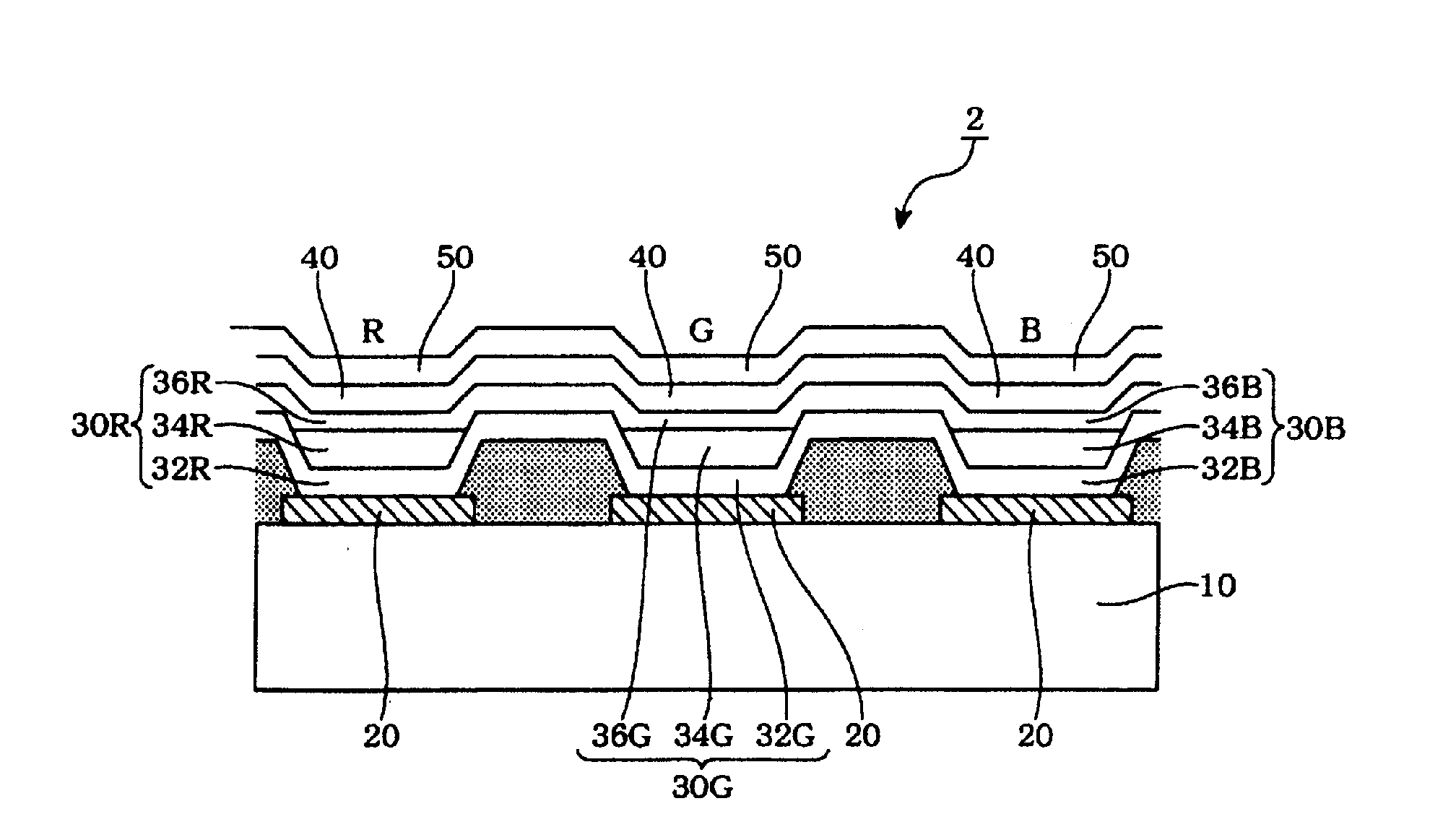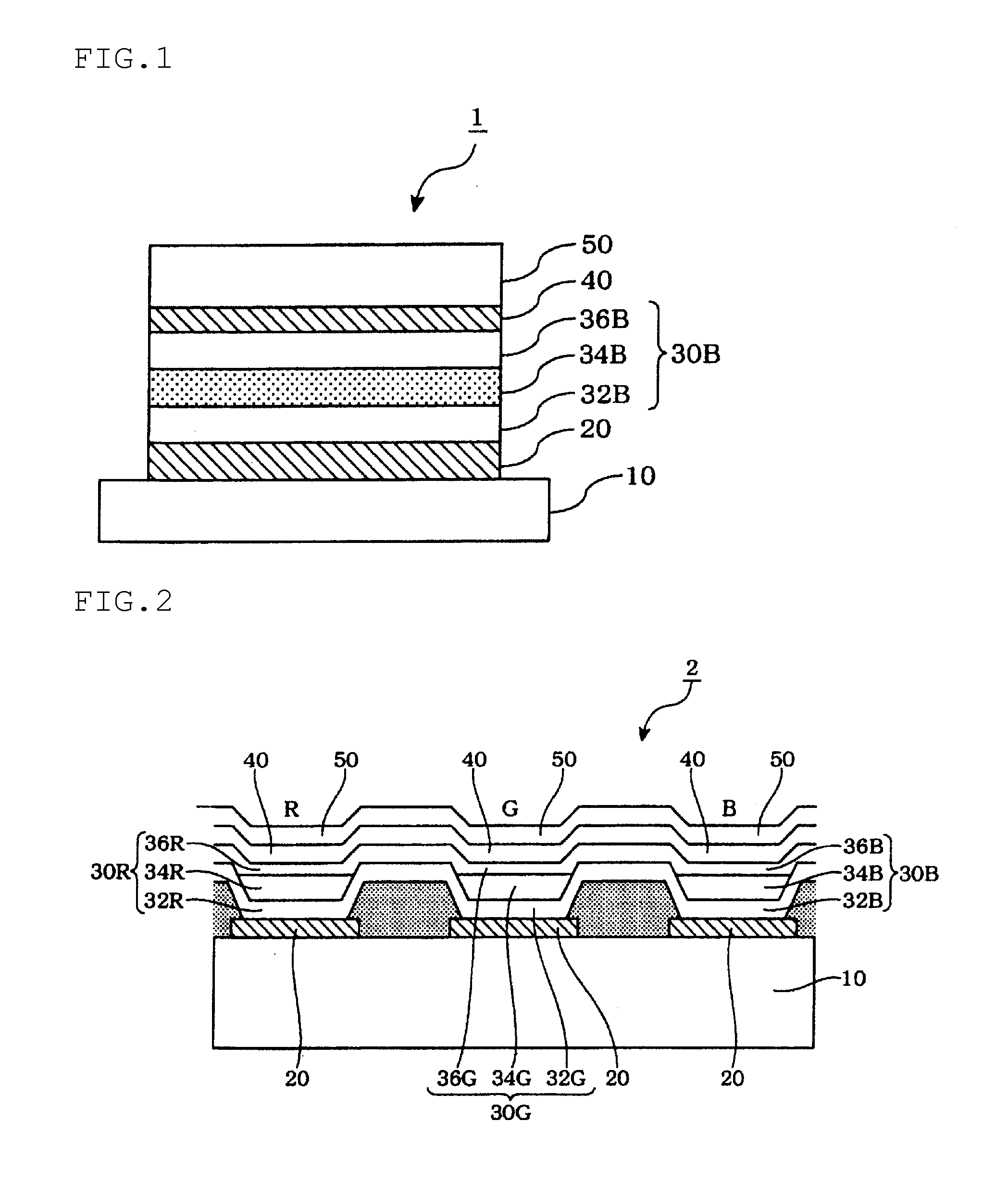Organic electroluminescence device
- Summary
- Abstract
- Description
- Claims
- Application Information
AI Technical Summary
Benefits of technology
Problems solved by technology
Method used
Image
Examples
Example
Synthesis Example 1 (Synthesis of Intermediate 1)
[0165]17.7 g of 9-phenylcarbazole, 6.03 g of potassium iodide, 7.78 g of potassium iodate, 5.90 mL of sulfuric acid and 50 mL of ethanol were put, and the resulting mixture was reacted at 75° C. for 2 hours.
[0166]After cooling, water and ethyl acetate were added, and the mixture was separated and extracted. The organic layer was washed with sodium bicarbonate water and water, and concentrated. The resulting crude product was purified by silica gel chromatography (toluene), and resulting solids were dried under reduced pressure, whereby 21.8 g of white solids were obtained. By the FD-MS analysis, the solids were identified as the intermediate 1.
Example
Synthesis Example 2 (Synthesis of Intermediate 2)
[0167]Under the stream of argon, dehydrated toluene and dehydrated ether were added to 13.1 g of intermediate 1. The resultant was cooled to −45° C. Then, 25 mL of an n-butyllithium hexane solution (1.58M) was added dropwise, and the resulting mixture was heated to −5° C. for 1 hour with stirring. Again, the mixture was cooled to −45° C., and 25 mL of boronic acid triisopropyl ester was gradually added dropwise, and the mixture was allowed to react for 2 hours.
[0168]After heating to room temperature, a 10% dilute hydrochloric acid solution was added to the mixture, followed by stirring, whereby an organic layer was extracted. After washing with saturated saline, the organic layer was dried with anhydrous magnesium sulfate, filtrated, and then concentrated. The resulting solids were purified by silica gel chromatography (toluene). The resulting solids were washed with n-hexane, and then dried under reduced pressure, whereby 7.10 g of s...
Example
Synthesis Example 3 (Synthesis of Intermediate 3)
[0169]Under the atmosphere of argon, 100 mL of toluene, 100 mL of 1,2-dimethoxyethane and 50 ml of a 2M aqueous sodium carbonate solution were added to 32.5 g of 3,6-dibromocarbazole, 63.2 g of intermediate 2, 0.92 g of tetrakis(triphenylphosphine)palladium (0). The resulting mixture was heated with reflux for 10 hours.
[0170]After completion of the reaction, the mixture was immediately filtered, and then the aqueous phase was removed. After drying with sodium sulfate, the organic phase was concentrated. The residue was purified by silica gel chromatography, whereby 45.5 g of white crystals were obtained. By the FD-MS analysis, the crystals were identified as the intermediate 3.
PUM
 Login to View More
Login to View More Abstract
Description
Claims
Application Information
 Login to View More
Login to View More - R&D
- Intellectual Property
- Life Sciences
- Materials
- Tech Scout
- Unparalleled Data Quality
- Higher Quality Content
- 60% Fewer Hallucinations
Browse by: Latest US Patents, China's latest patents, Technical Efficacy Thesaurus, Application Domain, Technology Topic, Popular Technical Reports.
© 2025 PatSnap. All rights reserved.Legal|Privacy policy|Modern Slavery Act Transparency Statement|Sitemap|About US| Contact US: help@patsnap.com



